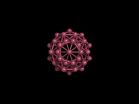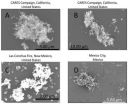(Press-News.org) (PHILADELPHIA) -- In the largest study to date comparing sutures (stitches) versus surgical staples for closing a C-section, researchers found a 57 percent decrease in wound complications in women who were sutured versus those who received staples. By carefully addressing the concerns that previous studies had raised, the research shows a clear benefit of suture for women.
"There has been ongoing debate in the field about the use of sutures versus staples," says senior author Vincenzo Berghella, M.D., director of Maternal Fetal Medicine in the Department of Obstetrics and Gynecology at Thomas Jefferson University. He added, "C-sections are a common procedure in the United States, and yet we still haven't established the best way to close these incisions."
"This study was designed to examine whether the evidence supports a specific closure method to decrease wound complications," says first author, Dhanya Mackeen, MD, MPH, who was a Jefferson fellow at the time the study was conducted. "This study clearly shows that women who undergo C-section have fewer wound complications after suture closure than after staple closure," she adds.
Cesarean sections account for about a third of all deliveries in the United States (in China that number is as high as 46 percent). A 2013 study showed that over 50 percent of doctors prefer to use staples over sutures, for ease of use, speed of the procedure, and for closing deeper incisions such as those in overweight women.
The current randomized study was conducted in three hospitals: Thomas Jefferson University Hospital, Lankenau Medical Center, and Yale-New Haven Hospital. A total of 746 pregnant women who received cesarean sections (most of whom were recruited at Jefferson) were divided into two groups, one whose incisions were sewn, and another whose incisions were stapled. In addition, the researchers ensured that both groups had roughly equal numbers of overweight or obese women, women who were having their first C-section, as well as those who were having their second or third C-section to ensure that any differences in complications weren't due to one of these factors. The researchers looked at a number of wound complications including infection, wounds that re-opened, and those that developed a build-up of fluid – either blood or lymphatic fluid – around the scar.
Drs. Mackeen, Berghella and colleagues observed that complications were 57 percent less likely to occur in patients whose incisions were closed with suture. In absolute numbers, 40 women out of 376 in the staples group had wound complications while only 18 out of the 370 patients in the suture group had wound complications. Women whose incisions were closed with stitches were 80 percent less likely to have their wound re-open to a size of 1cm or greater, than those whose C-sections were closed with staples.
Some doctors prefer the ease of stapling, and argue that the procedure is faster, which can be important in a busy labor floor. The researchers found, however, that on average suturing takes 9 minutes longer to complete than stapling.
"Based on these results, we recommend that C-section incisions be closed with stitches rather than staples," says Dr. Berghella, who has written a number of evidence-based guidelines for Obstetrics and Gynecology and is also the current president of the Society for Maternal-Fetal Medicine.
INFORMATION:
The authors report no conflicts of interest.
For more information, contact Edyta Zielinska, 215-955-5291, edyta.zielinska@jefferson.edu.
About Jefferson
Thomas Jefferson University (TJU),the largest freestanding academic medical center in Philadelphia, is nationally renowned for medical and health sciences education and innovative research. Thomas Jefferson University includes the Sidney Kimmel Medical College (SKMC), one of the largest private medical schools in the country and ranked among the nation's best medical schools by U.S. News & World Report, the Graduate School of Biomedical Sciences and the Jefferson Schools of Nursing, Pharmacy, Health Professions, and Population Health. Jefferson University Physicians is TJU's multi-specialty physician practice consisting of the full-time faculty of SKMC. Thomas Jefferson University partners with its clinical affiliate, Thomas Jefferson University Hospitals.
Article reference: A.D. Mackeen et al., "Suture Compared With Staple Skin Closure After Cesarean Delivery, A Randomized Controlled Trial," Obstet Gynecol, 123:1169, 2014. DOI: 10.1097/AOG.0000000000000227
Sutures or staples? The best choice for closing a C-section
Settling a long-time debate, researchers show that sewing up a C-section skin incision with sutures leads to fewer complications than using surgical staples
2014-07-07
ELSE PRESS RELEASES FROM THIS DATE:
Low-cost TB test means quicker, more reliable diagnosis for patients
2014-07-07
(BRYAN, Texas) — A new test for tuberculosis (TB) could dramatically improve the speed and accuracy of diagnosis for one of the world's deadliest diseases, enabling health care providers to report results to patients within minutes, according to a study published this week in the journal Angewandte Chemie.
Jeffrey Cirillo, Ph.D., professor at the Texas A&M Health Science Center College of Medicine, in collaboration with GBDbio, a Texas A&M spinoff company, and investigators at Stanford University, have identified a new chemical compound to spot the bacteria that cause ...
Platonic solids generate their 4-dimensional analogues
2014-07-07
Alicia Boole Stott, the third daughter of mathematician George Boole, is probably best known for establishing the term "polytope" for a convex solid in four dimensions. Alicia was also a long time collaborator of HSM Coxeter, one of the greatest geometers of the 20th Century.
Platonic solids are regular bodies in three dimensions, such as the cube and icosahedron, and have been known for millennia. They feature prominently in the natural world wherever geometry and symmetry are important, for instance in lattices and quasi-crystals, as well as fullerenes and viruses (see ...
Scientists find important piece in the brain tumor puzzle
2014-07-07
This news release is available in French. Scientists at the Montreal Neurological Institute and Hospital, McGill University and McGill University Health Centre have shown that a member of the protein family known as SUMO (small ubiquitin-like modifier) is a key to why tumour cells multiply uncontrollably, especially in the case of glioblastoma. The SUMO family proteins modify other proteins and the SUMOylation of proteins are critical for many cellular processes. Identifying SUMO's role in the cancer cell growth will lead to a new strategy for glioblastoma treatment. ...
NASA sees Hurricane Arthur's July fourth fireworks on US East Coast
2014-07-07
VIDEO:
On July 3, NASA's TRMM satellite passed over Arthur and saw intense bands of thunderstorms north of Arthur's well defined eye dropping rainfall at a rate of over 98.4 mm...
Click here for more information.
Hurricane Arthur made landfall in North Carolina on July 3, and today, July 4, it is bringing its own fireworks along the Mid-Atlantic and New England states. Those fireworks were in the form of "hot towers," powerful, high thunderstorms with heavy rainfall that indicate ...
Conclusion of the Lindau Nobel Laureate meeting
2014-07-07
The 64th Lindau Nobel Laureate Meeting ended with a panel discussion entitled "Science for the benefit of mankind" on Mainau Island, Lake Constance, Germany, today." 37 Nobel laureates and more than 600 selected young scientists from 80 countries had participated in the week-long meeting in the Bavarian city of Lindau since last Sunday. A boat trip to Mainau at the invitation of the State of Baden-Württemberg marked the finish of the programme which was devoted to medicine and physiology. In 1895 Alfred Nobel determined in his will that the Nobel Prizes shall be awarded ...
New optogenetic tool for controlling neuronal signalling by blue light
2014-07-07
Institute for Basic Science (IBS), the main organization of the International Science and Business Belt project in South Korea, has announced that a group of researchers, led by professor Won Do Heo, have developed a new technology in the field of optogenetics that can remotely control specific receptors by light. They have named this new technology "OptoTrk" and it has succeeded with neuronal differentiation inducement.
The most significant feature of OptoTrk technology is that it requires only light to activate neuronal functions without the need of other substances. ...
Perspective of the PandaX dark matter experiment
2014-07-07
The PandaX experiment of China, which is located in the deepest underground laboratory, has released its technical design report recently. The full article will appear in SCIENCE CHINA Physics, Mechanics & Astronomy, 2014, 57(8): 1476-1494.
The Particle and Astrophysical Xenon (PandaX) collaboration was established in 2009 and mainly supported by the Ministry of Science and Technology, the Ministry of Education in China, the Natural Science Foundation of China,and Shanghai Jiao Tong University. The experiment is suitable for both direct dark matter detection ...
New type of soot particle discovered from wildfire emissions
2014-07-07
RENO – Every year, wildfires clear millions of hectares of land and emit around 34-percent of global soot mass into the atmosphere. In certain regions, such as Southeast Asia and Russia, these fires can contribute as much as 63-percent of regional soot mass.
In a paper published in Nature Scientific Reports, a team of scientists led by Rajan Chakrabarty from Nevada's Desert Research Institute report the observation of a previously unrecognized form of soot particle, identified by the authors as "superaggregates," from wildfire emissions. These newly identified particles ...
Blocking cells' movement to stop the spread of cancer
2014-07-07
Insights into how cells move through the body could lead to innovative techniques to stop cancer cells from spreading and causing secondary tumours, according to new UCL research.
Scientists discovered that cells can change into an invasive, liquid-like state to readily navigate the narrow channels in our body. This transformation is triggered by chemical signals, which could be blocked in order to stop cancer cells from spreading.
Most cancer deaths are not due to primary tumours, but to secondary tumours in vital organs, such as the lungs or brain, caused by cells ...
Do you look infected? Should I kill you? No, I'm fine, move along
2014-07-07
Some viruses can hide in our bodies for decades. They make 'fake' human proteins that trick our immune cells into thinking 'everything is awesome', there's nothing to see here.
Now researchers at the Imaging Centre of Excellence at Monash and Melbourne Universities have determined the basic structure of one of the two known families of these deceptive proteins.
Using synchrotron light and working with a common virus that lives in people happily and for the most part harmlessly, they worked out the structure of the fake proteins. This is an important first step towards ...
LAST 30 PRESS RELEASES:
Making lighter work of calculating fluid and heat flow
Normalizing blood sugar can halve heart attack risk
Lowering blood sugar cuts heart attack risk in people with prediabetes
Study links genetic variants to risk of blinding eye disease in premature infants
Non-opioid ‘pain sponge’ therapy halts cartilage degeneration and relieves chronic pain
AI can pick up cultural values by mimicking how kids learn
China’s ecological redlines offer fast track to 30 x 30 global conservation goal
Invisible indoor threats: emerging household contaminants and their growing risks to human health
Adding antibody treatment to chemo boosts outcomes for children with rare cancer
Germline pathogenic variants among women without a history of breast cancer
Tanning beds triple melanoma risk, potentially causing broad DNA damage
Unique bond identified as key to viral infection speed
Indoor tanning makes youthful skin much older on a genetic level
Mouse model sheds new light on the causes and potential solutions to human GI problems linked to muscular dystrophy
The Journal of Nuclear Medicine ahead-of-print tip sheet: December 12, 2025
Smarter tools for peering into the microscopic world
Applications open for funding to conduct research in the Kinsey Institute archives
Global measure underestimates the severity of food insecurity
Child survivors of critical illness are missing out on timely follow up care
Risk-based vs annual breast cancer screening / the WISDOM randomized clinical trial
University of Toronto launches Electric Vehicle Innovation Ontario to accelerate advanced EV technologies and build Canada’s innovation advantage
Early relapse predicts poor outcomes in aggressive blood cancer
American College of Lifestyle Medicine applauds two CMS models aligned with lifestyle medicine practice and reimbursement
Clinical trial finds cannabis use not a barrier to quitting nicotine vaping
Supplemental nutrition assistance program policies and food insecurity
Switching immune cells to “night mode” could limit damage after a heart attack, study suggests
URI-based Global RIghts Project report spotlights continued troubling trends in worldwide inhumane treatment
Neutrophils are less aggressive at night, explaining why nighttime heart attacks cause less damage than daytime events
Menopausal hormone therapy may not pose breast cancer risk for women with BRCA mutations
Mobile health tool may improve quality of life for adolescent and young adult breast cancer survivors
[Press-News.org] Sutures or staples? The best choice for closing a C-sectionSettling a long-time debate, researchers show that sewing up a C-section skin incision with sutures leads to fewer complications than using surgical staples




